*This article has been updated to reflect the latest findings in SARS-CoV-2 research. The Lighting Practice is committed to providing its clients with the latest information on this topic as it becomes available.*
For many, the last several months have left us with a strong desire to return to prior pandemic-free existence and a growing uncertainty for how this can be achieved. How do we know if our shared spaces are safe? How can we prevent re-contamination? Enter ultraviolet light, specifically UV-C, a non-visible wavelength of light (radiant energy) effective in killing bacteria and viruses including coronaviruses. As knowledge of UV-C’s ability to kill coronaviruses spreads, there is a growing interest in GUV technology and its potential to restore trust in shared spaces. While the industry races to find the solution that will support our safe return to public life, we at The Lighting Practice advise caution. UV-C is dangerous and there is no single solution for all applications.
What is GUV and how is it used?
Germicidal Ultraviolet (GUV) is any UV product used for disinfection. A subtype of UV radiation known as UV-C (range of 200 to 280 nm) has proven effective in fighting SARS-CoV-2. While highly effective in treating liquid, surfaces, and air in contained environments, exposure to UV-C wavelengths is dangerous for humans and animals. For this reason, GUV products have traditionally been used in controlled environments like laboratories and medical treatment facilities after occupants have vacated the space. For occupants unable to vacate, personal protective clothing and eye protection are required. This technology is also used in HVAC air handling units to treat recirculated air and to reduce mold growth on cooling coils. GUV products are now being explored as a solution to disinfect a broader range of environments. While this idea is commendable and can certainly be effective under the right conditions, it also increases the risk of accidental exposure.
UV-C an imperfect solution
The Centers for Disease Control (CDC) and the World Health Organization (WHO) have confirmed the effectiveness of UV-C in combating infections and the Illuminating Engineering Society (IES) has developed guidelines for use in specific applications. Utilizing UV-C in GUV products to disinfect spaces is often recommended as a secondary measure or when no other cleaning alternatives are available. Currently GUV products use medium-pressure mercury lamps or pulsed xenon arc lamps. Despite efforts to develop products, like Far-UVC, that isolate “safer” wavelengths by using low-pressure mercury lamps (range of 200-230nm), direct exposure to any portion of the UV-C spectrum can be dangerous to humans, animals, and plant-life. UV-C can also damage or destroy organic materials like fabrics and plastics. GUV LEDs are being tested for both upper air disinfection and for some surface disinfection, but more research needs to be conducted with UV LED sources.
Recommendations for GUV Implementation
GUV products (minimum target UV-C fluence of 20 mJ/cm2; spectrum with a peak emission at 254nm under laboratory conditions) are proven to deactivate coronaviruses and are effective tools when disinfecting air and contaminated visible surfaces (not-shadowed). However, there is no single solution or approach that can be applied to every space type and environment. The three main GUV implementation approaches are:
- Upper-room GUV Systems to reduce airborne transmissions in occupied spaces.
These systems are recommended for spaces with minimum 10’-0” ceiling height. The UV-C fixtures mounted at 7 feet (2.1 meters) will disinfect air above. When surface disinfection is also desired, upper-room wall mounted fixtures that have an upward component for air as well as a downward component for visible surfaces can be effective. The downward facing lamp can be controlled with an occupancy sensor – turning off when occupants enter the room. - GUV in HVAC air handling units to treat recirculated air and reduce mold growth.
While effective in ensuring that contaminated air does not re-enter a space or circulate into other areas of a facility, GUV in HVAC units as a strategy is not effective in preventing occupant-to-occupant transmission in occupied shared spaces. - Mobile GUV units to disinfect high-touch surfaces.
Mobile GUV units operated by trained technicians or autonomous mobile GUV Devices (robots) can be effective in disinfecting surfaces in unoccupied spaces in conjunction with manual cleaning. It should be noted that hand-held GUV wands utilizing low-pressure mercury lamps are not reliable disinfection tools. These hand-held devices are generally underpowered and can easily be mis-used causing accidental exposure to the operator and surrounding occupants.
- Disclaimer: Personnel should always wear proper personal protective equipment when operating exposed GUV emitters that require the operator to be present during disinfection.
- Updated 8/27/20: It should also be noted that GUV surface disinfection may not be appropriate for all surface types when targeting SARS-CoV-2. In some cases, the virus may not survive long enough on a surface for UV-C radiation to be effective. In other cases, especially where plastic or stainless steel is used, a viable virus may survive on such a surface for 6 hours or more (Doremalen, Neeltje Van, et al, 2020). It is in the latter scenario where UV-C radiation may have a significant impact on the virus’s survivability and therefore may be able to disinfect effectively.
The Lighting Practice is qualified to specify GUV products supporting our clients’ goal in creating safe work environments. Above all, humans and animals should never be able to directly view an energized UV-C emitter. Please contact us if you have any questions or if you would like to discuss your specific application. Stay safe, stay well.
Works Cited
-
-
- Bedell, Kurt, et al. “Efficacy of an Automated Multiple Emitter Whole-Room Ultraviolet-C Disinfection System Against Coronaviruses MHV and MERS-CoV.” Infection Control & Hospital Epidemiology, vol. 37, no. 5, 2016, pp. 598–599., doi:10.1017/ice.2015.348.
- DiLaura, David, et al. The Lighting Handbook: Reference and Application. Illuminating Engineering Society of North America, 2011.
- Doremalen, Neeltje Van, et al. “Aerosol and Surface Stability of HCoV-19 (SARS-CoV-2) Compared to SARS-CoV-1.” New England Journal of Medicine, 2020, doi:10.1101/2020.03.09.20033217.
- “IES Committee Report CR-2-20 FAQs.” Illuminating Engineering Society: The Lighting Authority, www.ies.org/standards/committee-reports/ies-committee-report-cr-2-20-faqs/.
- Walker, Christopher M., and Gwangpyo Ko. “Effect of Ultraviolet Germicidal Irradiation on Viral Aerosols.” Environmental Science & Technology, vol. 41, no. 15, 2007, pp. 5460–5465., doi:10.1021/es070056u.
-






